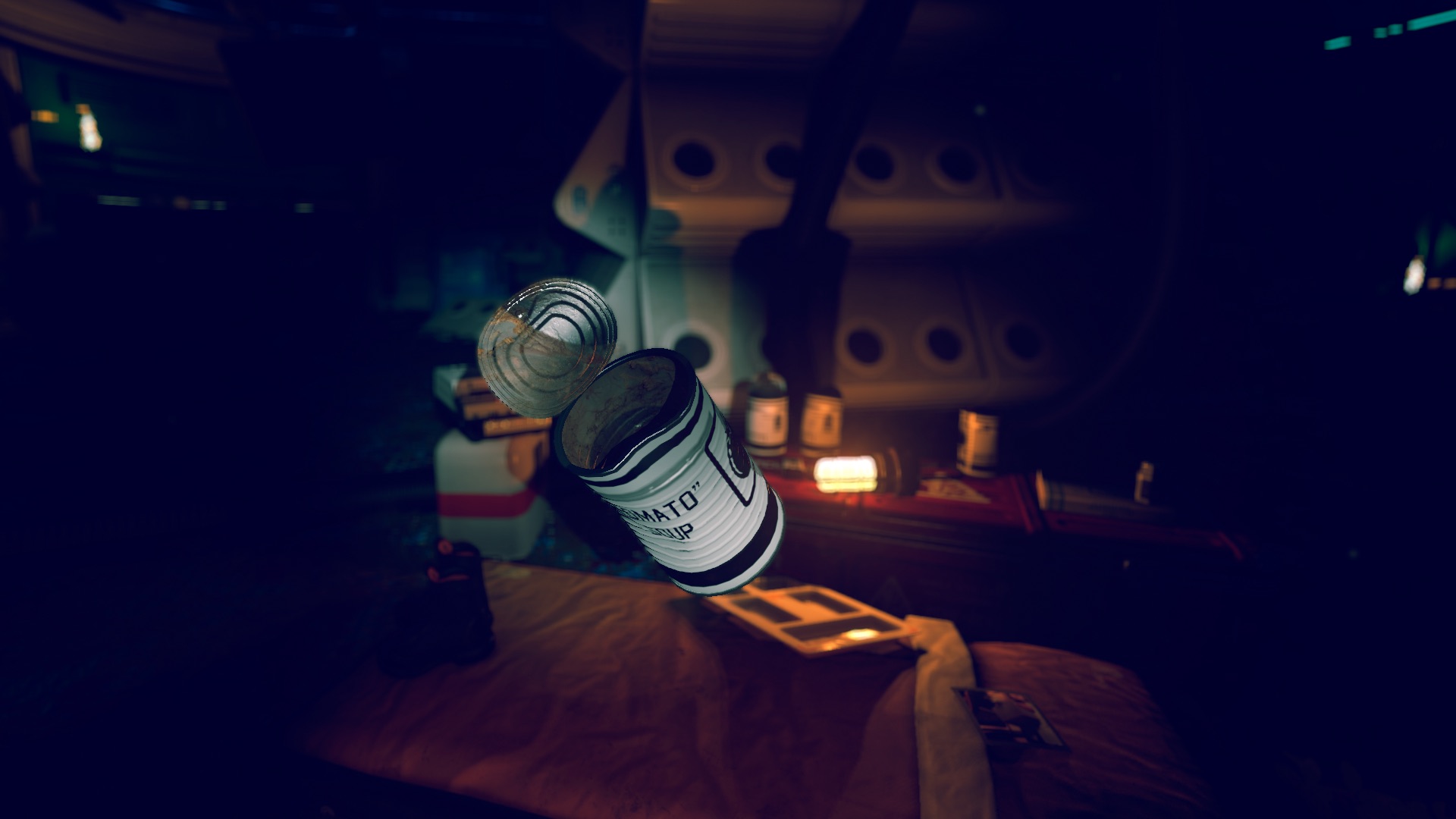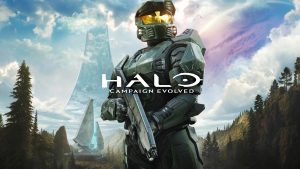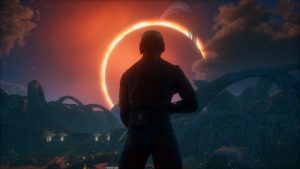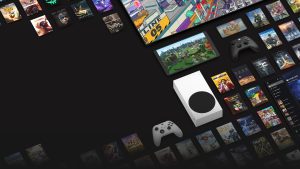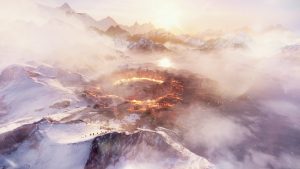
We’ve seen murder mysteries emerge for VR gaming and extravagant romps through alien planets. Next to these, Mindfield Games’ P.O.L.L.E.N. might seem overly familiar but it’s far from that. The sci-fi title takes inspiration from the worlds of Isaac Asimov and Arthur C. Clarke to craft a compelling setting. The narrative as well will be aided by the integration of VR but for now, Mindfield is trying to let on too much as to what you’ll be doing in P.O.L.L.E.N.
GamingBolt had a chance to speak to Ville Kivistö who is the CEO & co-founder Mindfield Games about the studio’s founding, the basic themes behind P.O.L.L.E.N, how VR affects the gameplay and prompts players to think differently, and thoughts on the future of virtual reality in gaming.
"Virtual reality is very immersive, and in early phase of the development of P.O.L.L.E.N we found out, that people want to pick up items and examine them closer. It feels really natural in VR and adds a lot of credibility to the gameplay when you actually can take photos with the in-game cameras."
Tell us about Mindfield and how you got started, from the studio’s founding in 2013 to its current state. How long has P.O.L.L.E.N. been in development?
Mindfield Games got started as me and Antti Laitinen (our gameplay programmer guru) experienced the challenges of mobile games industry and found ourselves in a situation that we had to figure out our next steps. We had had lunch discussions for over a year about a game which was pretty much P.O.L.L.E.N’s predecessor and it was obvious for us that we wanted to make that game.
This was late 2013 and we had just had a chance to try DK1. Even though it was just a proof of concept, it was easy to see how it would transform the games once the technology is a bit more mature. So we really wanted to make P.O.L.L.E.N to work well in virtual reality, and we were lucky enough to find people who shared our view of the future of gaming and wanted to join us in creating Mindfield Games.
P.O.L.L.E.N has now been in development for over two years and it will be ready early next year.
What inspired the basic theme for P.O.L.L.E.N. and honestly, what is up with all the bees?
Everyone in the company is more or less a true sci-fi fan so the setting was quite obvious us from the beginning. Being fans of more “serious” sci-fi, like Asimov, Clarke and Reynolds, we wanted to create a believable and more down to earth sci-fi than just your usual laser swords and pointy eared green men (not that we wouldn’t like Star Wars though!).
Bees and pollen play a part in the story and it’s something we want to let players to figure out once they have played through the game. Though we’re not sure if there’s only a single explanation for everything…
Can you give us an example of a basic gameplay scenario in P.O.L.L.E.N.? How are these mechanics affected by designing the game around VR support?
Jaakko Kemppainen: A player walks into a room and sees the room has changed quite a lot since his or her last visit. The player notices that the previously messy table is now brightly lit and the objects are in order. She walks to the table and sees there’s a large blueprint laying on it. On top of the blueprint there are some books and different notes. Small pile of dirty dishes and empty food packages is on the other end of the table.
What have the people of the station been doing here? Apparently they’ve had a dinner, flushed down with something from “Vasili’s distillery”. Then they pushed the dishes aside and focused on the map. The player picks up books and notes. Each of the items gives hints of the events in the station. Not only the items tell the story, but also the setting of the scene and the surroundings are part of the narrative design.
Virtual reality is very immersive, and in early phase of the development of P.O.L.L.E.N we found out, that people want to pick up items and examine them closer. It feels really natural in VR and adds a lot of credibility to the gameplay when you actually can take photos with the in-game cameras. After getting used to the high interactivity of the environments in P.O.L.L.E.N, playing in more static game environments feel really artificial, like walking in a movie prop or watching someone else’s dream, instead of being present in the game world.
Another thing the “VR first” ideology has affected greatly is the size and density of the environment. Free moving has its problems in VR, which can be helped by, for example, slowing down the movement speed. Thus, we decided that we are not building a huge world where the gameplay consists mostly of walking forward. We made the world compact and focused on details of things instead of their amount. This may cut the play through time a bit, but on the other hand the amount of transitions through negative spaces is quite small and most of the playing time is intensive exploration and examination of smaller and denser scenes.
"P.O.L.L.E.N utilizes many state-of-the-art graphical features and tricks, which have put the limits of Unity to test. Having all kinds of eye candy is great and affects greatly the atmosphere, but it also requires quite a lot of computing power."
You talked about P.O.L.L.E.N. using several little tricks make the first person experience comfortable for players. Could you tell us more about these?
It all comes down to player movement. As the player is able to move freely in the world, just like in any other first person game, the experience is very tricky to get free from motion sickness. The movement speed, acceleration, head bobbing, jumping, gamepad acceleration and pretty much everything is different when played with a headset. We have had numerous test players giving us feedback about our movement, and currently our “feeling a bit strange” rates after a VR gameplay session are very low for a first person game. For more sensitive players we also provide options like snap turning and teleportation movement but we highly prefer the free movement as the immersion is improved a lot when player moves in the virtual world just like in the real one.
The system requirements for getting the required frame rates on P.O.L.L.E.N. are fairly high, even in today’s age of AAA blockbusters. What are you currently doing to optimize the experience for players?
P.O.L.L.E.N has very configurable graphics settings so the players are able to scale the visual quality to match their hardware. We didn’t want to compromise the traditional flat screen experience so the game will still look great if you want to play without a VR headset. This has the additional benefit that the VR version will look great even in the future as new hardware will allow the players to ramp up the visual quality of VR version.
However, even if you turn down all the graphics options the game will still look great. We’ve had numerous players trying out the VR and flat screen version and quite a few have been able to tell any noticeable difference between the two.
How has your experience been with Unity and how has it helped to achieve AAA visuals on a modest budget?
Unity was very important us from early on in the project as its workflow allows really rapid prototype times. This was really useful for us in the beginning as we had to learn VR development all by ourselves – after all, pretty much no one had prior experience in developing for VR. So there was lots of stuff we had to try and fail before learning the good stuff. And the same applies for visuals as well.We had to do lots of tests to see what works and what doesn’t.
Unity is also easy for artists to do quick iterations on graphics, and especially Unity 5 features regarding lighting and materials really gave us that added sense of realism to make player really feel being somewhere else.
What was the biggest challenge in developing P.O.L.L.E.N.? Also, given the number of other exploration games that VR devices will be receiving, what have you been doing to distinguish the experience from the competition?
Jaakko Kemppainen: Generally, motion sickness seems to be the biggest challenge in all VR development. Keeping up high resolution and framerate helps with the issue, which means that the hardware requirements are rather high. This relates to the movement in VR. By default the movement is the familiar twin-sticks or WASD+mouse, combined with head tracking. This may be the best solution for the immersion, but we will include a couple of other schemes for movement in the VR that will make playing the game better for people more sensitive to motion sickness.
P.O.L.L.E.N utilizes many state-of-the-art graphical features and tricks, which have put the limits of Unity to test. Having all kinds of eye candy is great and affects greatly the atmosphere, but it also requires quite a lot of computing power. We have included a lot of adjustment possibilities into the game, so the player should be able to match the level of graphics to his hardware.
What comes to the distinguishing, we have three spearheads in our strategy: attention to detail, sandbox and the grand finale. The amount of love and time put into the graphical and audio design is huge. The player can easily spend hours in the game just examining all the little and big details. Beside audiovisual detail, we have put a lot of effort to the consistence and logic of the world and story. So when you find something in the game world, there usually is a reason for its existence.
"It’s far reached to think that all PS4 owners would get a PlayStation VR. A lot depends on the price as well. If the VR headset will cost more than the console, then that will be an obstacle for many. If Sony is able to push down the price low enough then we can expect millions of PS4 owners getting a headset."
And when this gets boring, the player can start experimenting with the environment. How about building row of dominoes from books? Or trying to get past certain obstacles by using emergent features of the physics engine. We have included some spots in the game, where the player will cause havoc, wanted it or not. This is of course tied to the environmental storytelling and overall narrative.
Literally last, but not least, we can promise you that when you play through the game – no need to examine everything, since most of the narrative is voluntary – you will experience something you have experienced in games never before. Many people in Mindfield Games have history in demoscene, and this will be seen throughout the game, but especially in the end parts.
Is there a worry about the future of virtual reality as a mainstream commercial device or do you believe next year – which sees the release of Oculus Rift and PlayStation VR – is the time for the medium to take over?
Having tried all the latest hardware and getting to see what consumers will get next year, I have no doubt virtual reality wouldn’t take off starting from next year.
What are your thoughts on PlayStation VR? Do you think it will overcome the challenges that lie ahead for VR tech in general?
One great advantage that PlayStation VR has is that the underlying hardware is fixed. If you have a PS4, then you can be sure that your gaming machine is powerful enough to run the VR content that it has. And Sony has lots of experience in bringing finalized hardware to the markets.
All of the VR headsets have their own strengths and weaknesses. As a developer, we’re happy to see that the consumers have lots of options when it comes to choosing their hardware. We just need to make sure that our game is playable on as many of those devices as possible.
How do you think it’ll go down? VR seems like quite a niche, for really dedicated people. Do you think everyone with a PS4 will get into VR, or do you think it will be just for a dedicated few?
It’s far reached to think that all PS4 owners would get a PlayStation VR. A lot depends on the price as well. If the VR headset will cost more than the console, then that will be an obstacle for many. If Sony is able to push down the price low enough then we can expect millions of PS4 owners getting a headset.
The biggest hurdle in VR headsets gaining popularity is that the experience is almost impossible to describe with words or pictures. Therefore traditional marketing is quite difficult, as consumers are not able to figure out what the experience is all about. It’s sort of like Matrix – no one can be told what it is, you have to see it for yourself. In this regard, HTC has done good job with Vive, bringing the headsets all around the world to consumers on their road tours.
You are in an interesting position. Not only you are working on PC side of things but are also getting a taste of what is possible on the PS4. What is your take on the differences between the PS4’s API and DirectX 12?
Luckily Unity takes care of hiding the differences for us, even though, as a graphics programmer, I’d really love to be able to fiddle under the hood.
"The whole foundation for Mindfield Games is that our games will always be VR first so you can be sure that we will bring you more VR games in the future."
What’s really great in the new low overhead APIs is what they bring to VR optimizations. You really don’t need to worry about double drawcalls or texture state switches as it really doesn’t matter if you’ve done things right in your engine. It’s not only the hardware that drives better graphics for VR but software side is at least as important.
How does developing a PS VR game differ from making a game on the PS4 itself? Are you still able to deliver graphically intensive experiences?
Shortly put, yes. Sony’s temporal reprojection helps a lot in this, upscaling the framerate to 120Hz. Also the scalable nature of P.O.L.L.E.N’s visuals help us to find the visual levels that run constant 60Hz. And as on PC, on PS4 we are also able to ramp up the visuals when the game is played without a VR headset.
Microsoft has been making frequent updates to the X1’s SDK but what about Sony? Do you think they are putting in the same amount of effort?
We don’t have experience in Microsoft’s updates, but we’re sure Sony is actively looking to improve their SDKs and bring in new features (like VR related optimizations) when it makes sense.
And, any specific reason why you are not targeting the X1?
Even though P.O.L.L.E.N can be played without a VR headset, being a VR focused studio, we’re only interested on platforms that are able to provide players a great VR experience. If Microsoft chooses to build a VR headset on Xbox One, I hope they let us know well ahead of the launch.
Will you be focusing on more VR games in the coming years? How has the experience with P.O.L.L.E.N. helped to shape the studio’s knowledge and development culture?
The whole foundation for Mindfield Games is that our games will always be VR first so you can be sure that we will bring you more VR games in the future. Having developed P.O.L.L.E.N for over two years now, we have learned so much that it naturally helps us immensely when it comes to developing our next games. We are very proud of how P.O.L.L.E.N has shaped up and how well it plays – even without VR headsets. But we also have great new ideas reserved for our next projects.








